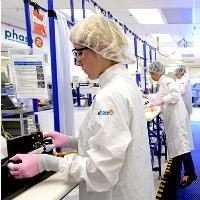(BRUSSELS)- Safer medical devices and fast patient access to innovative devices are the aim of a provisional deal on new rules for medical devices and in vitro diagnostic products reached by the EU Council and Parliament Wednesday.
Medical devices and in vitro diagnostics products range from sticking plasters, artificial hips and pacemakers to laboratory tests and home pregnancy tests.
Parliament’s rapporteur on medical devices Glenis Willmott MEP welcomed the agreement, saying the measures would give patients confidence in the devices used to treat them, or that are implanted in them. “These include stricter requirements for notified bodies, aesthetic devices covered for the first time and a Unique Device Identification system so that we know which device has been implanted in which patient. We’ve also agreed a much stronger system of post-market surveillance so that any unexpected problems are identified and dealt with as soon as possible”, she added.
The new rules guarantee the safety of medical devices by introducing stricter rules on the marketing of devices and closer monitoring once they are on the market. The requirements for the notified bodies responsible for market authorisation are to be tightened up, also the supervision of these organisations, who must have well-qualified, independent staff to properly assess new devices and conduct unannounced inspections of manufacturers.
Clear rules have also been set out for manufacturers to guarantee the quality, performance and safety of devices once they have been granted market access. This will enable rapid intervention, and provide information that can be used for product improvement. Manufacturers and other commercial parties will also be given other clear responsibilities, concerning matters such as liability and the registering of complaints about their devices.
Stricter requirements for clinical trials
The new regulations will also introduce stricter requirements for clinical trials and performance testing. This should make more reliable clinical data available on medical devices and in vitro diagnostic products. Protection of human subjects in clinical trials is another key focus.
High-risk devices
Extra testing by experts may be required before some high-risk medical devices, such as implants and in vitro diagnostic products for life-threatening diseases, can be marketed. Panels of independent experts and laboratories will play an important role in the future legislative system. If necessary, they can give designated bodies, competent authorities and manufacturers expertise and advice on the clinical aspects of medical devices. Certain high-risk products that are similar to medical devices but are not currently subject to any rules, such as wrinkle fillers and coloured contact lenses, will also be covered by the regulation.
Transparency and better traceability
Transparency on medical devices will be hugely improved, with a large database of devices containing a host of information about manufacturers, importers, distributors, notified bodies, market surveillance data, clinical trial results and certificates. Patients, healthcare professionals and the general public will have access to detailed information about products available on the European market, allowing them to make better-informed choices. Patients with an implant will also be given specific information about the product, including any necessary precautions. Manufacturers will be obliged to give their device a unique identification code, making it more traceable throughout the entire distribution chain, so that action can be taken more quickly should any risks become apparent.
Next steps
The EU’s Dutch presidency will present the outcome of the negotiations to the member states for their approval in mid-June. The European Parliament is likely to vote on it in a plenary session in the autumn. The new rules for medical devices will then come into force three years after publication, those for medical devices for in vitro diagnostic products five years after publication.


